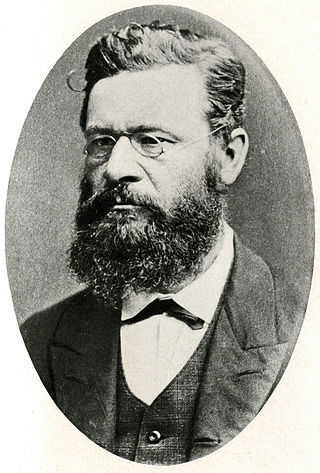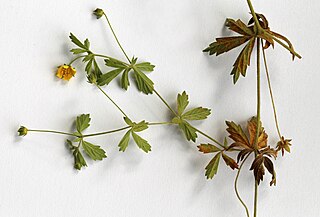Related Research Articles

Lewis David de Schweinitz was a German-American botanist and mycologist from Bethlehem, Pennsylvania. Considered the "Father of North American Mycology," he also made significant contributions to botany.

Petter Adolf Karsten was a Finnish mycologist, the foremost expert on the fungi of Finland in his day, and known in consequence as the "father of Finnish mycology".

Jean Louis Émile Boudier was a pharmacist who lived in Montmorency, France. He published a fair amount about the Discomycetes and other areas of mycology. He often used Émile as his first name.
Holmiella is a genus of fungi in the order Patellariales.
Kobayasia is a genus of fungi in the family Phallaceae. It contains the species Kobayasia nipponica(Kobayasi) S.Imai & A.Kawam. and Kobayasia kunmingica M.Zang, K.Tao & X.X.Liu.
Asterolibertia is a genus of fungi in the Asterinaceae family.
Nymanomyces is a genus of fungi within the Rhytismataceae family. It has been found in the Caribbean.

Montagnea is a genus of fungi in the family Agaricaceae. The genus has a widespread distribution in subtropical dry areas, and contains six species. Montagnea was circumscribed by Swedish mycologist Elias Magnus Fries in 1836.

Hertella is a lichenized genus of fungi within the Placynthiaceae family.

The Mixiomycetes are a class of fungi in the Pucciniomycotina subdivision of the Basidiomycota. The class contains a single order, the Mixiales, which in turn contains a single family, the Mixiaceae that circumscribes the monotypic genus Mixia. Only one species has been described to date, Mixia osmundae; this species was originally named Taphrina osmundae by Japanese mycologist Toji Nishida in 1911. It is characterized by having multinucleate hyphae, and by producing multiple spores on sporogenous cells.

George Edward Massee was an English mycologist, plant pathologist, and botanist.
Holtermannia is a genus of fungi in the order Holtermanniales. Species produce groups of horn-like gelatinous basidiocarps on wood and have associated yeast states. The genus is distributed in southeast Asia and Brazil, and contains six species.
Michenera is a genus of fungi in the family Corticiaceae. The genus contains four species found in pantropical regions.

Carlo Luigi Spegazzini, in Spanish Carlos Luis Spegazzini, was an Italian-born Argentinian botanist and mycologist.

Frommeella (Frommeëlla) is a genus of rust fungi in the family Phragmidiaceae. The widespread genus contains two species.

Holwaya is a genus of fungi in the family Bulgariaceae. Holwaya is monotypic, containing the single species Holwaya mucida, which was originally named Bulgaria ophiobolus by Job Bicknell Ellis in 1883, and later transferred to the newly created Holwaya by Pier Andrea Saccardo in 1889. The genus name of Holwaya is in honour of Edward Willet Dorland Holway (1853-1923), who was an American botanist (Mycology) and Banker.
Liroa is a monotypic genus of fungi found in the family Microbotryaceae. It contains the single species Liroa emodensis, common name Microbotryum emodensis.
Karl von Keissler was an Austrian lichenologist and mycologist.
Franz Petrak was an Austrian-Czech mycologist.

Hesseltinella is a genus of fungi belonging to the family Cunninghamellaceae.
References
- ↑ "Olivea Arthur 1917". MycoBank. International Mycological Association. Retrieved 2011-07-11.
- ↑ Kirk PM, Cannon PF, Minter DW, Stalpers JA (2008). Dictionary of the Fungi (10th ed.). Wallingford, UK: CABI. p. 480. ISBN 978-0-85199-826-8.
- ↑ Burkhardt, Lotte (2022). Eine Enzyklopädie zu eponymischen Pflanzennamen [Encyclopedia of eponymic plant names](pdf) (in German). Berlin: Botanic Garden and Botanical Museum, Freie Universität Berlin. doi:10.3372/epolist2022. ISBN 978-3-946292-41-8 . Retrieved January 27, 2022.
- ↑ "Olivea Arthur". www.gbif.org. Retrieved 31 August 2022.